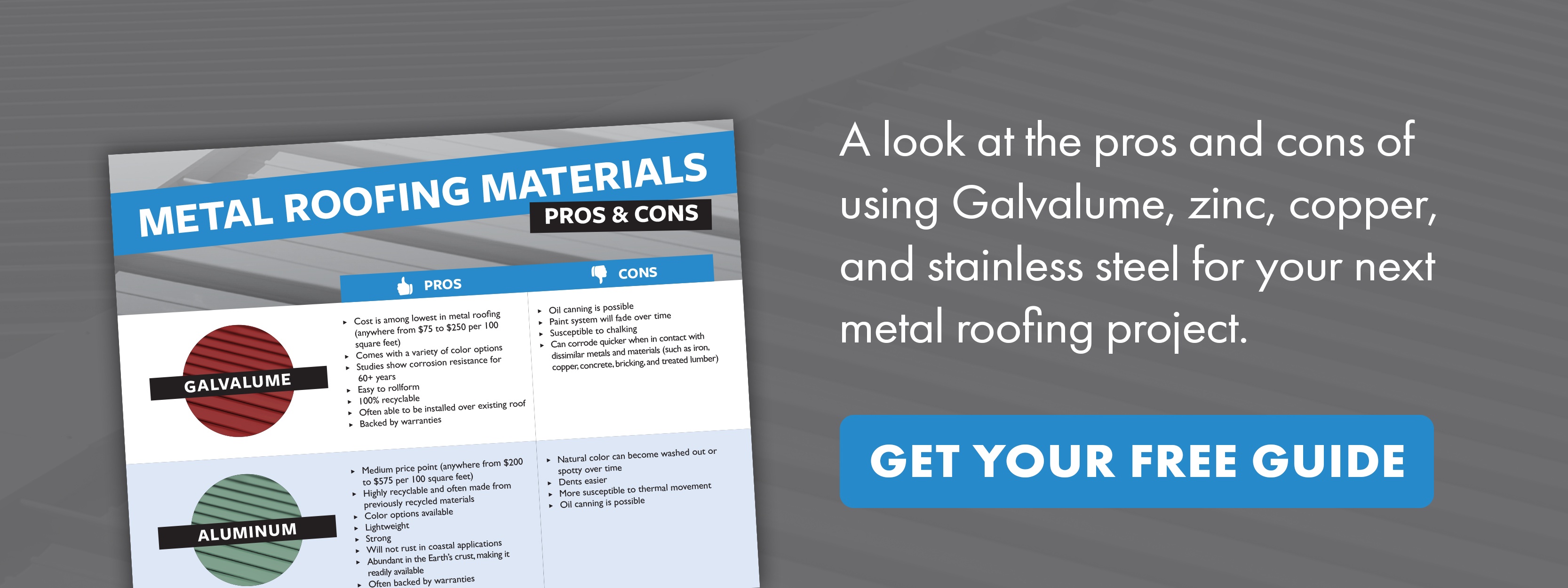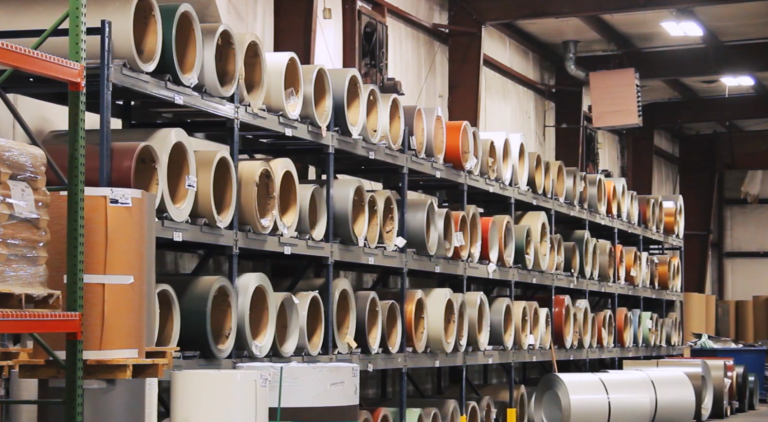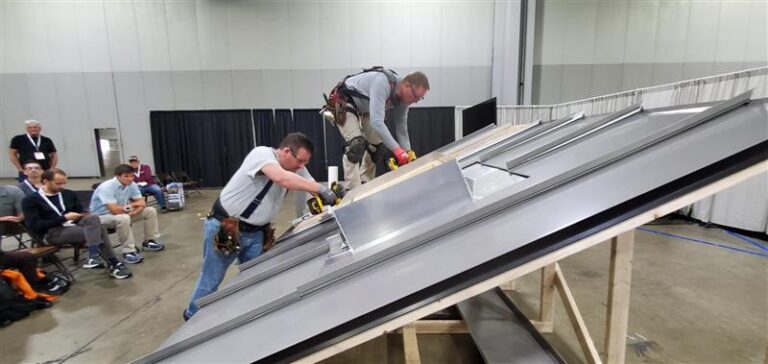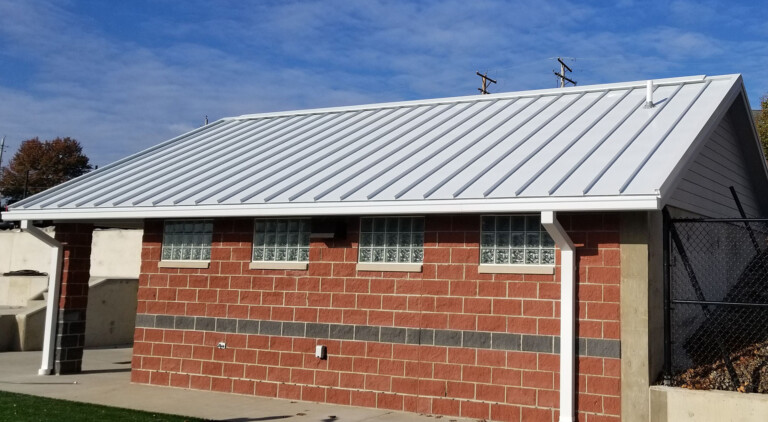Synthetic vs. Felt Underlayment for Metal Roofing: Which Is Best?
There are distinct differences between synthetic and asphalt-saturated felt underlayment used for metal roofing systems. Stay educated on the advantages and disadvantage of these two popular underlayment options.
“What is roofing underlayment?” “What are the most common types?” “What are the pros and cons of each type?”
Whether you’re a property owner looking into your roof underlayment options or a contractor staying educated on various types of underlayments — the questions above are just a few of the things you might be asking yourself.
When it comes to metal roofing, there are two main options for underlayment: synthetic or felt paper. Both are good choices to use for metal roofing, but there are some distinct differences to keep in mind.
For over 20 years, Sheffield Metals has been building up our line of engineered metal roofing systems (including the accessories and underlayment) for our customers to use for their projects. Plus, we know how important it is to know your buying options, especially when it involves something as significant as a new roofing system.
In this article, we’ll cover:
- What synthetic underlayment is.
- The advantages and disadvantages of synthetic underlayment.
- What felt underlayment is.
- The advantages and disadvantages of felt underlayment.

Synthetic Underlayment
What Is Synthetic Underlayment?
Synthetic underlayment is a roofing accessory created by weaving/spinning together polypropylene or polyethylene and a polymer to form an all-over protective barrier to put between the roofing material and the roof deck. Synthetic underlayment is a newer innovation that is taking over the metal roofing industry as a better, more advanced replacement for felt underlayment. Most synthetic underlayments are mechanically attached with roofing caps and staples, while others have a glue backing.
At Sheffield Metals, we recommend our roofing systems be installed using Sharkskin, a synthetic underlayment manufacturer that offers four product choices: Sharkskin COMP®, Sharkskin Ultra®, Sharkskin UltraSA®, and Sharkskin UltraRadiant®.
(NOTE: The synthetic underlayment we discuss in this article doesn’t include peel and stick, ice & water shield, or self-adhering underlayment.)
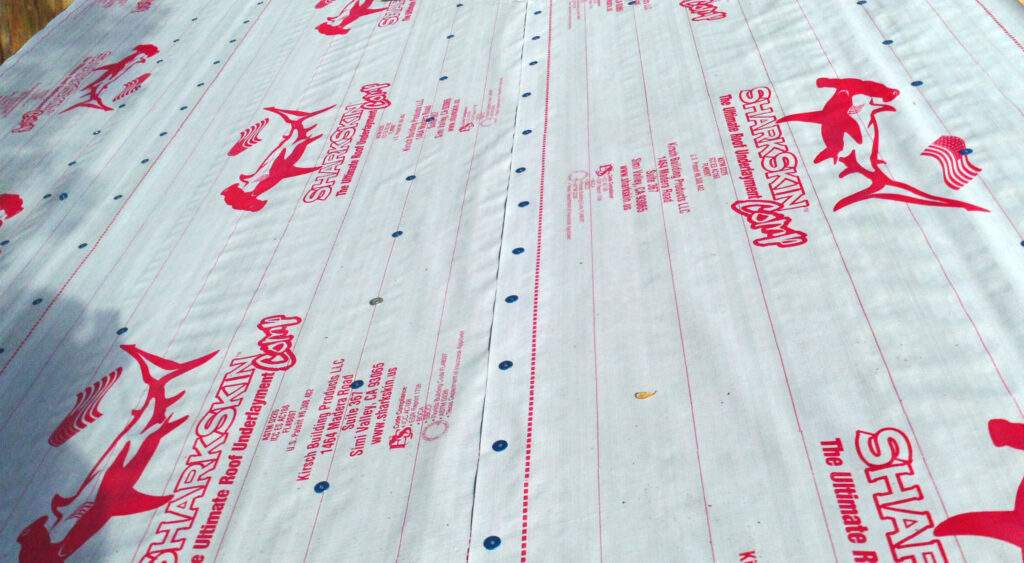
Synthetic Underlayment Advantages
Longevity – Without a doubt, synthetic underlayment is going to last longer when compared to felt paper underlayment. In fact, most manufacturers guarantee that it’ll last as long as your metal roofing system (40+ years), if not longer. Longevity also applies to how long the bare underlayment can be exposed to the sun during an installation. The number of days or months varies by the supplier, but some synthetics can last up to an entire year of UV exposure without drying out. This can be very helpful for some projects where the installation is temporarily halted or where there are harsher weathering elements.
More durable – One of the biggest complaints regarding felt underlayment is that it tears with relative ease. Plus, felt paper has been known to fly off the roof and into neighboring properties during the installation before it’s attached to the roof deck. Synthetic underlayment is engineered with thermoplastic polymers that are significantly stronger to resist tearing, moving, or other damage that could occur during installation.
High-temperature tolerance – Synthetic underlayment also makes a great choice in regions with higher temperatures. For example, Sharkskin products can withstand temperatures of up to 260 degrees (Fahrenheit), which makes them a good choice for buildings in desert, tropical, or other high-heat climates.
Retains less heat – Most synthetic underlayments come in a mid-to-lighter gray color, which means the material retains less heat from the sun and doesn’t get as hot to the touch. This is especially helpful for the contractors handling and installing the underlayment.
Comes in larger rolls – Synthetic underlayment rolls tend to have more material and square foot coverage per roll because it’s often longer; meaning it’s a better “bang for your buck.” For reference:
- Synthetic underlayment tends to come in rolls of 10 roofing squares (or 1,000 square feet per roll)
- Felt paper tends to come in rolls of 2 to 4 roofing squares (or 200 to 400 square feet per roll)
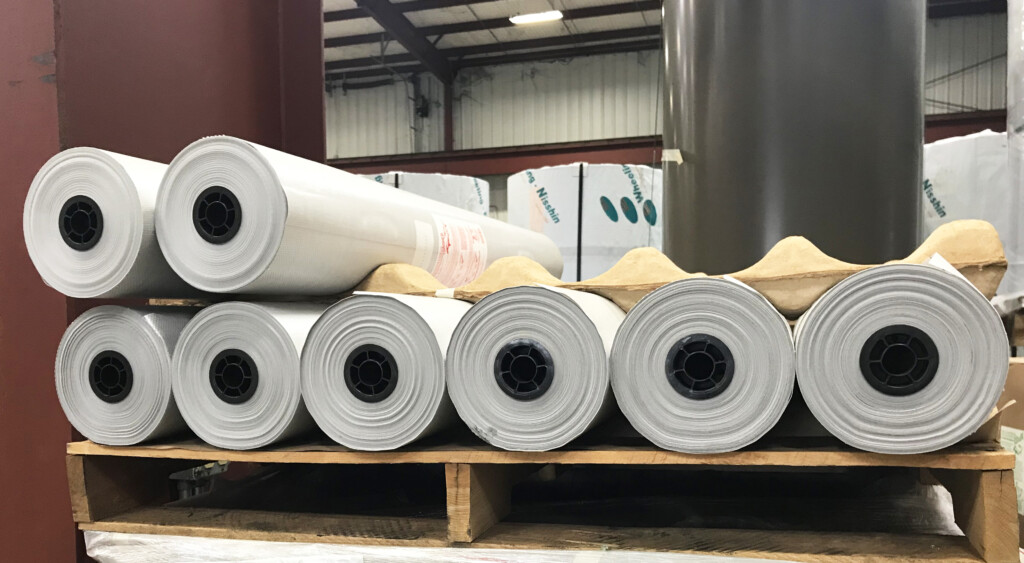
Lightweight – Synthetic underlayment averages around 2 to 4 pounds per roofing square, compared to asphalt felt paper of about 15 to 30 pounds per square. Not only does this reduce the stress inflicted on the building’s frame/structure, but it also makes it easier for installers to haul up onto the roof.
Warrantied product – Most reputable synthetic underlayment manufacturers offer warranties on their products based on testing and industry standards. Some of the superior synthetic products even come with as high as a 50-year limited warranty.
Walkability – One of the biggest concerns for a roofing contractor is having a good, slip-resistant grip while walking and working up on a roof. Luckily, many synthetic products have a slip-resistant surface built into the material. For example, Sharkskin underlayment is engineered with a “heavy-duty fibrous top layer that provides superior slip resistance for wet and dusty conditions.”
Often recyclable – One of the major perks of synthetic underlayments is that polyethylene and propylene are both recyclable materials. So when it comes time for the underlayment to be disposed of or if there are unusable leftover scraps, they can be recycled appropriately.
Fire resistance – Many synthetics have a Class-A fire rating, meaning that when used in conjunction with a Class-A fire-rated roof assembly, it offers the highest resistance to combustion or catching on fire.
Wrinkle-free – It’s crucial for the underlayment to lay flat on the roof deck so the metal panels aren’t exposed to any stresses that could cause the development of oil canning. Most synthetic underlayments do not wrinkle when exposed to moisture, sunlight, or other elements.
Synthetic Underlayment Disadvantages
More expensive – The most significant disadvantage to synthetic underlayment is that it usually comes at a higher price point. Depending on the manufacturer or where it’s purchased, synthetics can be anywhere from two to five times more expensive than felt paper. Since it’s one of the best-performing materials to use as underlayment and the fact that it’s a newer invention, you’re getting what you pay for (a superior, long-lasting product). Also, keep in mind that synthetic underlayment comes in larger rolls, so you might have to purchase significantly more rolls of felt paper to cover the roofing structure, which may end up evening out the price difference in the end.
Low permeability rating – While it may be a good thing for a roof underlayment to have a low permeability rating, meaning that less water and air can pass through it, it also can cause issues if not installed correctly. With synthetic underlayment, moisture from within the building cannot escape from the inside outwards, which means that proper attic and building ventilation is imperative when installing synthetics.
Lower slopes – For low-slope standing seam metal roof applications, strictly peel and stick underlayment is a better choice.
(NOTE: These advantages and disadvantages do not apply to a granulated synthetic underlayment, as it is not to be used directly under metal roofing. In fact, many synthetic underlayments are designed for specific roofing materials, so be sure to check and verify beforehand.)
Asphalt Felt / Tar Paper Underlayment
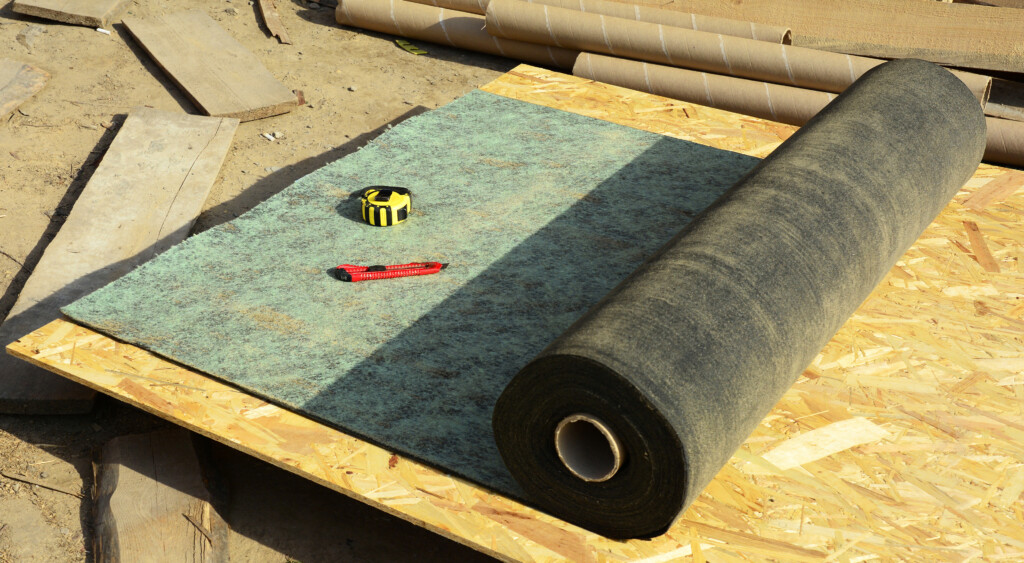
What Is Asphalt Felt / Tar Paper Underlayment?
Asphalt felt underlayment is known by many different names, including felt paper, roofing tar paper, felt underlayment, asphalt-soaked felt, and so on. For this article, we will just call it felt underlayment or felt paper. Felt underlayment is an all-over roofing accessory made of a natural (wood cellulose, natural fibers, etc.) or synthetic (polyester or fiberglass) base that is then saturated in asphalt to make it waterproof. It is then laid down and attached to the roof deck below the roofing material.
Felt was widely used in the mid-to-late 1900s as the preferred underlayment choice but is slowly phasing out due to the introduction of better synthetic options. However, it is still used today in some steep-slope and shingle applications.
Felt Paper Underlayment Advantages
Less expensive – The most notable advantage to installing felt paper is that one roll of felt paper is quite a bit less expensive than one roll of synthetic underlayment. While it may be worth it for some home or building owners to buy a synthetic brand, it may also not be necessary or important for others. So if you’re on a strict budget, felt underlayment is the best choice. However, as we mentioned, you might have to purchase numerous rolls of felt paper for one project, as opposed to just one roll of synthetic for the same project.
Water-resistant – Asphalt (or bitumen) is a water-resistant substance, which does help keep water from penetrating the underlayment’s surface if water leaks through the roofing structure. That being said, felt paper does have a higher permeability than synthetics, which means air and water are able to pass through the material easier.
Most commonly used – Since felt paper was used for the majority of roofing projects in the past, is cheaper than synthetic, and works well with shingle roofing, there is still an existing need for it. That’s why most home improvement stores (Home Depot, Lowe’s, Menards, etc.) sell felt paper, which makes it available nearly anywhere.
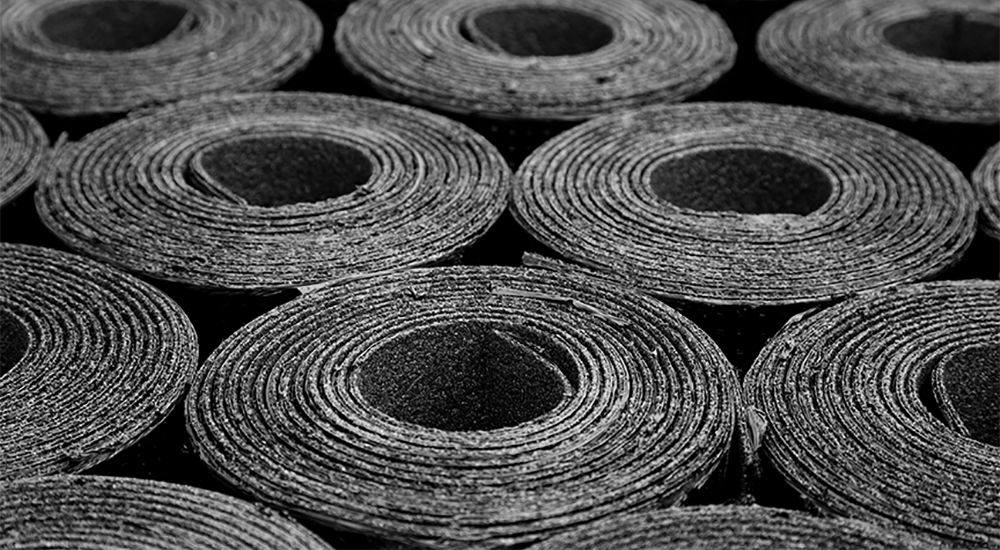
Felt Paper Underlayment Disadvantages
Shorter longevity – The biggest issue with felt paper underlayment is that it doesn’t last as long as a synthetic underlayment. Longevity varies dramatically from manufacturer to manufacturer; since this material is most popular with shingle roofing, most felt paper is warranted for the lifetime of a shingle roof (usually 15 to 20 years). Felt underlayment will break down and weaken over time, especially if exposed to high heat, sun exposure, or frequent temperate fluctuations.
High-temperature problems – Another problem that could arise with felt underlayment is that it doesn’t respond well in high-heat environments. Asphalt is a semi-solid form of petroleum and an oil-based product, so it is more susceptible to high temperatures breaking down the material, drying out the oil, cracking, and ultimately degrading prematurely.
Less exposure time – Felt underlayment should not be exposed to sunlight for an extended period of time. How long it can be is dependent on how much asphalt/oil is in it and how quickly the material will dry out and not perform properly. According to Construction Pro Tips, some roofing felt can bubble, buckle, and wrinkle within just 24 hours of UV exposure. These imperfections created in the felt can even translate through shingles or metal panels to create an unsightly surface.
Might require a slip sheet – A slip sheet is a layer of building paper that is installed beneath the roofing material to further protect the felt underlayment from damage or sticking that can occur when coming into contact with metal panels. The addition of a slip sheet will increase the cost.
Fire concerns – Asphalt-soaked felt paper comes with its own set of precautions regarding fires. As mentioned, asphalt is made from petroleum, which is a highly flammable substance by itself. During the production of felt paper, UV degraded mineral granules are added on top of the felt to make it more fire-resistant, but if the felt is damaged and a fire source comes in contact with the asphalt, it could potentially combust. That being said, most felt underlayment is considered “slow-burning,” so if a fire does occur, it won’t catch on fire (if it does) all at one time.
Heavier – Felt underlayment usually comes in two different sizes, 15-pound (#15) or 30-pound (#30). These numbers represent how much the underlayment will weigh per roofing square (100 square feet). One roll of felt underlayment weighs similar to one roll of a synthetic underlayment, but there’s at least twice as much synthetic underlayment in one roll, meaning the contractor will have to haul up a larger number of felt paper rolls.
Less recyclability – Much like asphalt shingles, you technically can recycle felt paper underlayment, but most contractors/installers don’t know that you can or don’t take the necessary steps to do so. Unfortunately, a lot of the leftover scraps or tear-off felt paper are just thrown away and end up in a landfill.
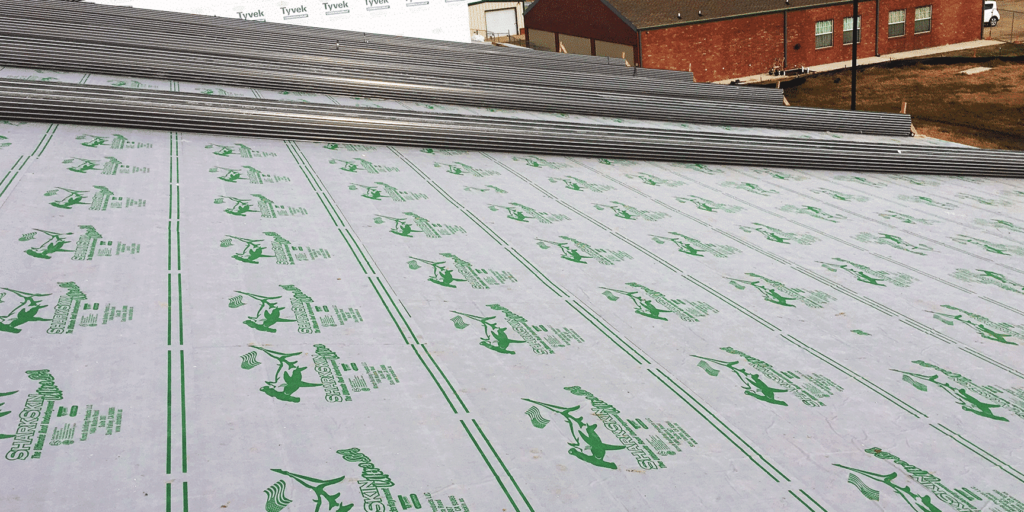
Final Thoughts on Synthetic vs. Felt Underlayment
So, is synthetic or felt paper underlayment the best choice for you?
Well, it depends.
For help deciding between these two options, ask yourself these questions:
- How long do I want the roof underlayment to last? How about the actual roof?
- Does my or my customer’s budget allow for an expensive underlayment?
- Will my or my customer’s underlayment be exposed to long periods of sun or heat?
- Do I want to be able to buy my underlayment at a big box/home improvement store?
- How concerned am I about fire resistance or having a Class-A fire rating?
At Sheffield Metals, we understand how important it is for you to choose the right underlayment right from the start. That’s why we’ve partnered with Sharkskin Underlayments, a trusted supplier providing value and long-term underlayment solutions, to distribute their synthetic underlayment products.
Contact one of our metal roofing specialists today to discuss your underlayment needs and find the right product for you!
